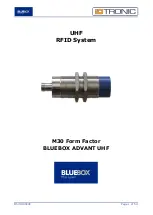
SECTION 2 - PROCEDURES
2-4
– JLG Lift –
3121801
valve. Integral actuator port relief valves, anti-cavitation
check valves, and load check valves are standard.
Relief Valves
Main relief valves are installed at various points within the
hydraulic system to protect associated systems and com-
ponents against excessive pressure. Excessive pressure
can be developed when a cylinder reaches its limit of
travel and the flow of pressurized fluid continues from the
system control. The relief valve provides an alternate path
for the continuing flow from the pump, thus preventing
rupture of the cylinder, hydraulic line or fitting. Complete
failure of the system pump is also avoided by relieving cir-
cuit pressure. The relief valve is installed in the circuit
between the pump outlet (pressure line) and the cylinder
of the circuit, generally as an integral part of the system
valve bank. Relief pressures are set slightly higher than
the load requirement, with the valve diverting excess
pump delivery back to the reservoir when operating pres-
sure of the component is reached.
Crossover Relief Valves
Crossover relief valves are used in circuits where the actu-
ator requires an operating pressure lower than that sup-
plied to the system. When the circuit is activated and the
required pressure at the actuator is developed, the cross-
over relief diverts excess pump flow to the reservoir. Indi-
vidual, integral reliefs are provided for each side of the
circuit.
2.6 COMPONENT FUNCTIONAL
DESCRIPTION
Hydraulic Pump
The machine is equipped with two hydraulic pumps, a
function pump and a drive pump. The function pump is a
single-section gear pump that controls the lift and steer
functions and provides a maximum output of 18 lpm (4.75
gpm). The drive pump is a single-section piston pump that
controls the drive function and provides an output of 83.3
lpm (22 gpm).
Lift Cylinder Counterbalance/Manual
Descent Valve
The lift cylinder counterbalance/manual descent valve is
located on top of the lift cylinder. The counterbalance
valve is used to hold the platform in place when raised. A
cable is connected to the valve which, when pulled, manu-
ally opens the lift down port and allows the platform to be
lowered in the event hydraulic power is lost.
The lift cylinder counterbalance/manual descent valve is
located on top of the lift cylinder. The counterbalance
valve is used to hold the platform in place when raised. A
cable is connected to the valve which, when pulled, manu-
ally opens the lift down port and allows the platform to be
lowered in the event hydraulic power is lost.
2.7 WEAR PADS
Sliding Pads
The original thickness of the sliding pads is 51 mm (2 in).
Replace sliding pads when worn to 48 mm (1.875 in).
2.8 CYLINDER CHECKING PROCEDURES
NOTE:
Cylinder checks must be performed any time a cylin-
der component is replaced or when improper system
operation is suspected.
Cylinder w/o Counterbalance Valves - Steer
Cylinder
OPERATE FUNCTIONS FROM GROUND CONTROL STATION
ONLY.
DO NOT FULLY EXTEND CYLINDER TO END OF STROKE.
RETRACT CYLINDER SLIGHTLY TO AVOID TRAPPING PRES-
SURE.
1. Using all applicable safety precautions, activate
motor and fully extend cylinder to be checked. Shut
down motor.
2. Carefully disconnect hydraulic hose from retract port
of cylinder. There will be initial weeping of hydraulic
fluid which can be caught in a suitable container.
After the initial discharge, there should be no further
leakage from the retract port.
3. Activate motor and activate cylinder extend function.
Check retract port for leakage.
4. If cylinder leakage is 6-8 drops per minute or more,
piston seals are defective and must be replaced. If
cylinder retract port leakage is less than 6-8 drops
per minute, carefully reconnect hose to retract port
and retract cylinder.
5. With cylinder fully retracted, shut down motor and
carefully disconnect hydraulic hose from cylinder
extend port.
6. Activate motor and activate cylinder retract function.
Check extend port for leakage.
7. If cylinder leakage is 6-8 drops per minute or more,
piston seals are defective and must be replaced. If
extend port leakage is less than 6-8 drops per min-
ute, carefully reconnect hose to extend port, then
activate cylinder through one complete cycle and
check for leaks.
Summary of Contents for JLG 260MRT
Page 1: ...Service Maintenance Manual Model 260MRT 3121801 April 19 2013...
Page 2: ......
Page 8: ...iv JLG Lift 3121801 TABLE OF CONTENTS This page left blank intentionally...
Page 22: ...SECTION 1 SPECIFICATIONS 1 14 JLG Lift 3121801 NOTES...
Page 66: ...SECTION 2 PROCEDURES 2 44 JLG Lift 3121801 NOTES...
Page 91: ...SECTION 3 GENERAL ELECTRICAL INFORMATION SCHEMATICS 3121801 JLG Lift 3 25 NOTES...
Page 95: ...SECTION 3 GENERAL ELECTRICAL INFORMATION SCHEMATICS 3121801 JLG Lift 3 29 NOTES...
Page 104: ...SECTION 3 GENERAL ELECTRICAL INFORMATION SCHEMATICS 3 38 JLG Lift 3121801 NOTES...
Page 105: ......
















































